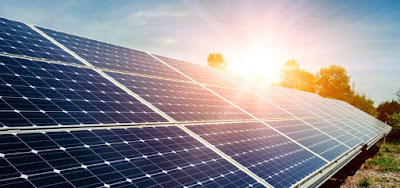Solar power to be the leading low-carbon economy industry
Abundant solar energy resources in China, the average annual solar radiation from 1050 to 2450 kWh / sqm, and the United States are similar to other regions than Europe and Japan. In China's Xinjiang, Tibet, Ningxia, and Gansu, the annual volume of 3,000 hours or more light. The solar power station was known as "unmanned station", the normal operation of only 2,3-staff. According to reports, the staff first, the total power plant control room on the monitor, resolve unexpected problems; second, clean-up solar panels, dust, and a stain, and water or a broom will sweep clean, maintenance is simple.
World Climate Change Conference in Copenhagen and the State Council that the carbon intensity of 2020 decreased by 40% to 45% in this context, no one dares to despise renewable Energy Development prospects. Is developing a "new energy development plan" put forward by 2020, renewable energy consumption and total primary energy consumption 15% more than important. Accordingly, a simple calculation, the next decade, solar power will grow more than a hundred times.
Solar energy is clean energy. In recent years, Europe, the United States, and other developed countries and regions have accelerated the development of the photovoltaic industry, has entered a substantive stage of development and utilization. China is also "renewable energy and long-term planning" make: will invest 95 billion yuan by 2020 to increase the total capacity of solar power generation to 1,800 megawatts.
The current cost of solar power is still higher than the wind and falls far short of China's electricity price, but our solar manufacturing industry accounted for half of global manufacturing capacity, and are exported to Europe and America. With the falling costs of solar power, solar power is likely to become the next low carbon economy, the world's leading industry.
Solar power has more exciting plans. First, the Genesis plan proposed by Japan. Ready to use ground desert and sea to generate electricity, and through the superconducting cable together into a unified global network of solar power stations to supply to the world. It is estimated that in 2000, 2050, 2100, even though all the world's energy supply with solar power, but also as an area of 651,100 square.
Square km, 1,867,900 square km, 8,291,900 square kilometers. 8.2919 million square kilometers of the marine area only 2.3% of the total, or 51.4% of all desert, and even the Sahara desert is 91.5%. So this program is possible. Another is the power of heaven program.
As early as 1980, NASA and the Department of Energy has proposed the idea of space solar power station building, prepared to put in orbit a long 10 km wide and 5 km of a large plate, covered with solar cells, this would provide 5 million kW of electricity. But this needs to address the problem to the terrestrial wireless transmission. Has proposed using microwave beams, laser beams, and other programs. Although the current model of aircraft with a short-range and short-term, low-power microwave wireless transmission, but also from the real practical long distance
This backdrop, many large companies are very bullish on solar power. Germany technology giant Siemens (Siemens) and the German reinsurance company MunichRe new solar power plant in the Sahara desert. Toshiba recently announced that it will enter the home solar power systems market. Mitsubishi Electric Corporation has said it will plant in Kyoto Prefecture new solar cell production line, in the face of the rapidly expanding market demand, competition among various manufacturers is becoming increasingly fierce.

Comments
Post a Comment